Overlay experiments
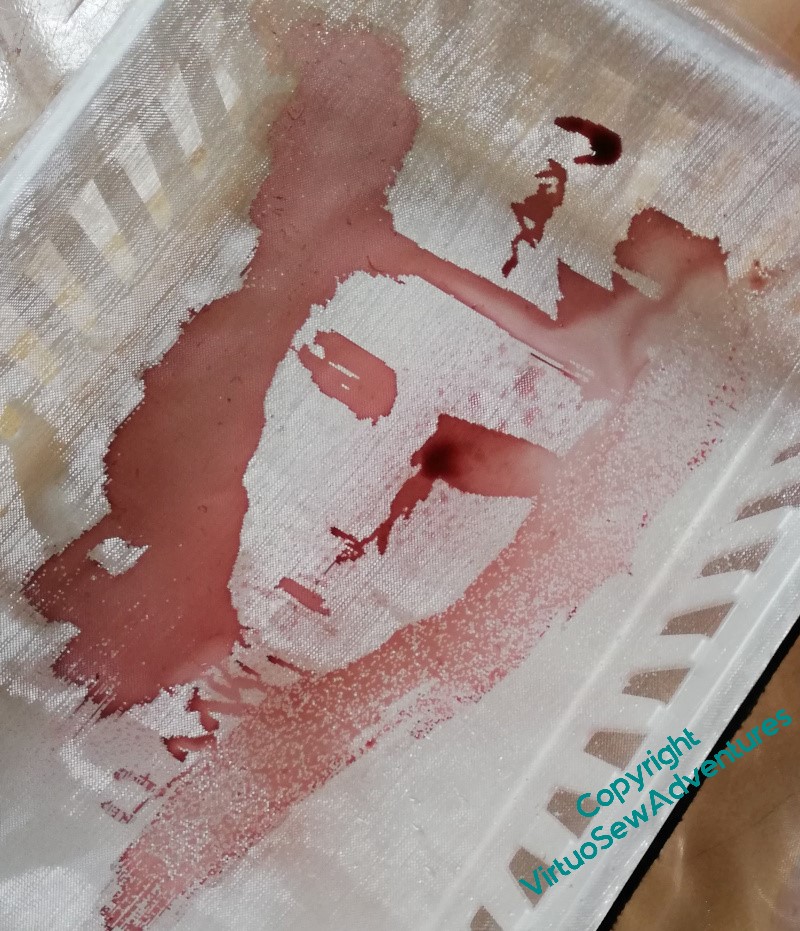
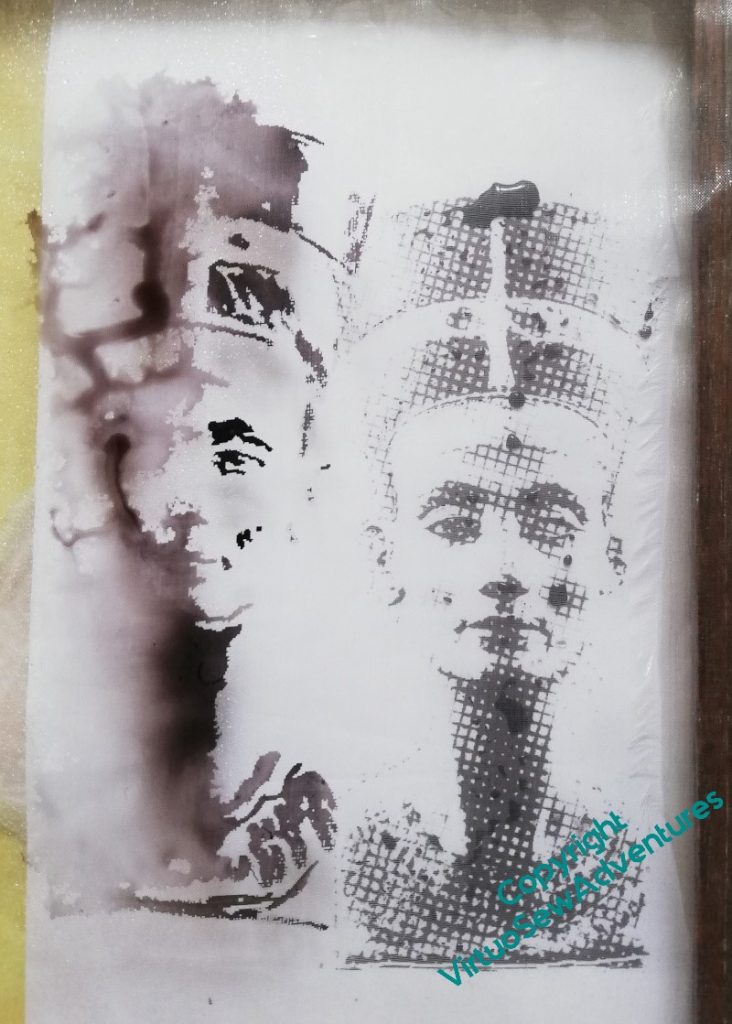
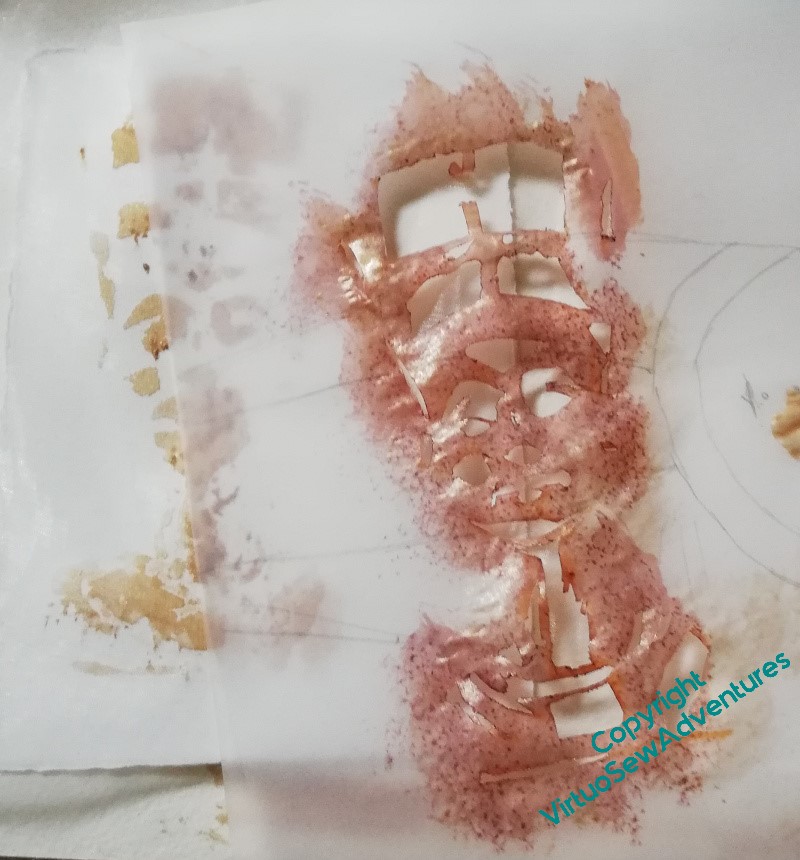
You may recall that I spent some extra time trialling other methods for creating the overlays. My original screenprint idea had long since been abandoned, partly because the past five years when I’ve been painting as well has given me much more confidence in myself, and partly because finding somewhere to make such big silk screens – as a one-off, what’s more! – was proving impossible.
When I’d looked again at the first overlays I used in the first photoshoot, it was clear that they wouldn’t survive much longer, so I thought I would try with my acrylic inks. I cut stensils and dabbed, I used brushes and painted, I played with pre-wetted fabrics and with spraying the fabric with water afterwards.
In fact, I had several wonderful messy days.
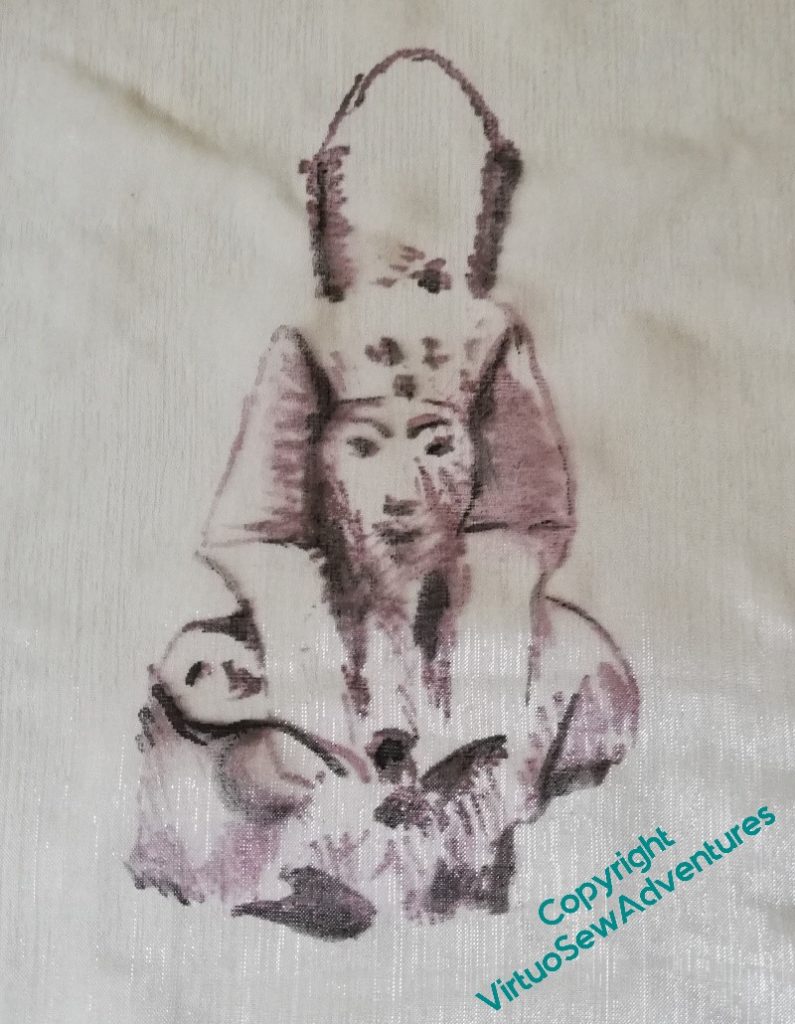
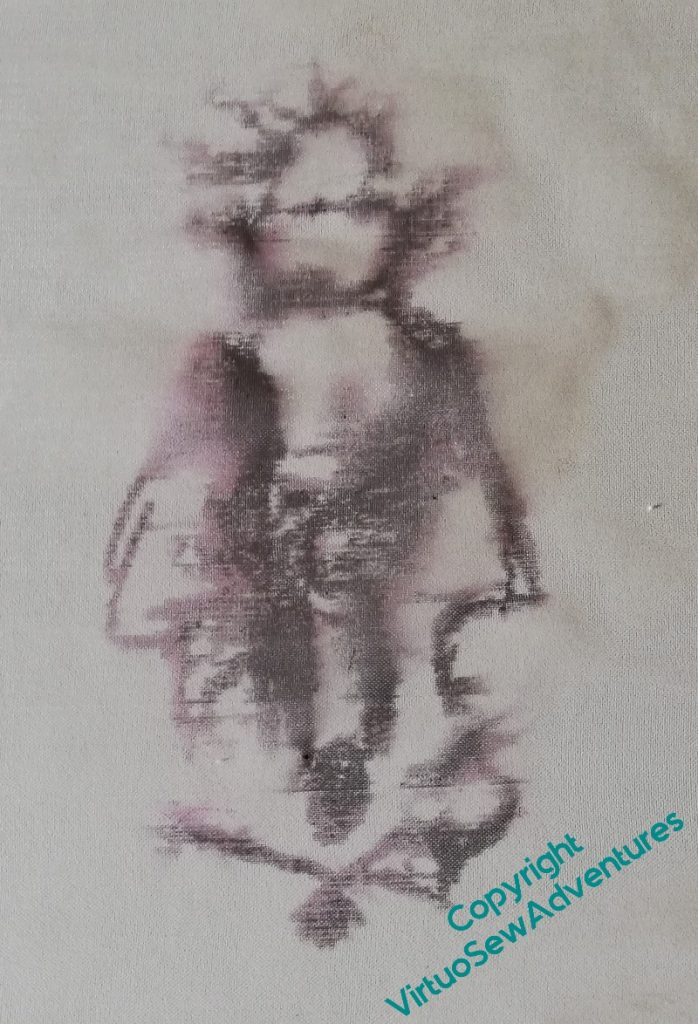
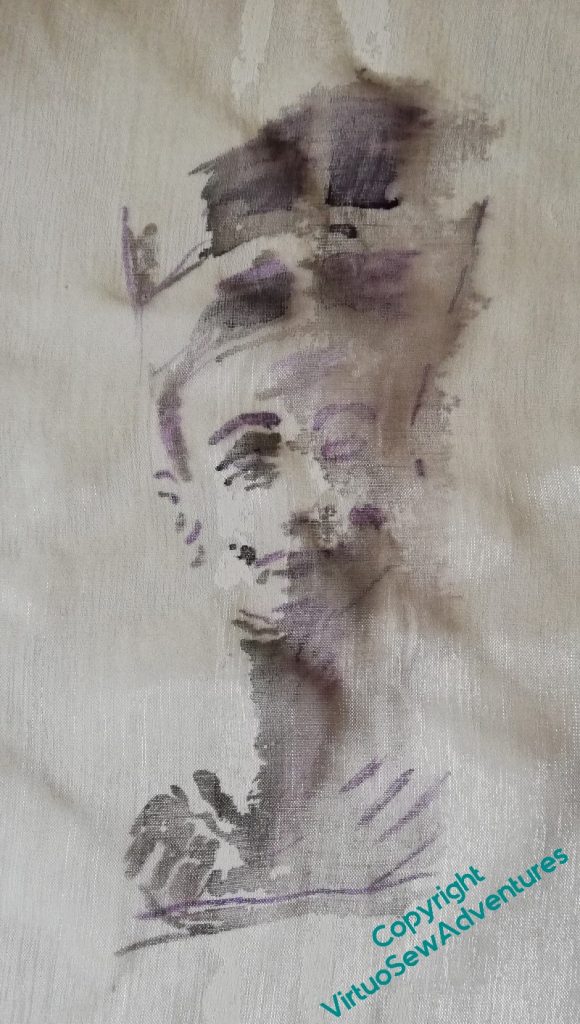
And as you can see, some of them were really striking, and wonderfully vague, and set against a plain background the washed out and tendrilly ones do create the appearance of decay and dissolution which is appropriate. The Amarna period was washed out of history in ancient times, and while Akhenaten has had the last laugh, for centuries his name and that of his Great Royal Wife were never spoken.
However, set in front of the embroidery, they confused the eye too much. The one on the left is too detailed, the middle one is seeping away before our eyes, and the one on the left has acquired spotches I never intended.
And then there was this one. I had thought that using a brown or sandy colour would aid the “there and not there” appearance.
It certainly nailed “Not there” – it didn’t really show at all!
So in the end, as I described, I went back to the inktense blocks, but with the added support of some pastel fixative. Since I’ve used the fixative, and the overlays are now stretched over frames and not subject to abrasion in storage, I hope very much that I did indeed find the best solution.
But if anyone tries to tell you that artists and designers get it right first time – don’t believe them!

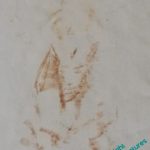
I have been watching the progress (and setbacks) of the overlays with interest and in the hope that you would eventually fine something that achieves what you have been aiming at. It was a difficult task and I am glad that your perseverance is finally paying off.
Working on the overlays must have been a challenge. First, you tried various methods and then you had the task of selecting the one that was closest to your intended result.
I am sure most visitors to the exhibition will appreciate the time and work you have put into this work of art.
Lots of trial and learning. I’m sure you’ll have made the right decision.
Experimentation is part of the design process and a very important part.
Looking forward to seeing what emerged form all this wonderful mark making!
Look watching what you have been creating. Very inspiring.